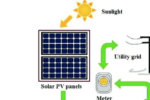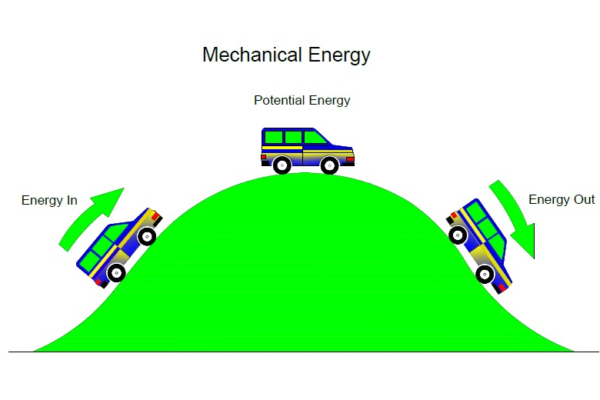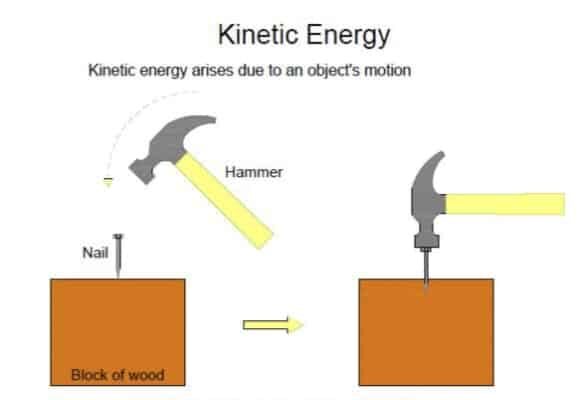How many forms have energy? Know more.
We all are aware of the energy we have, and the entire Universe is filled up with energy. The total energy in the gravitational system is constant but it can convert from one form to another depending on its applications.
What is energy?
The entire Universe is filled up with energy. The total energy in the gravitational system is constant but it can convert from one form to another depending on its applications. Then what is energy? Britannica.com says ” Energy, in physics, is the capacity for doing work. It may exist in potential, kinetic, thermal, electrical, chemical, nuclear, or other various forms” In simple terms, we may say, the capacity of doing work is called energy.
The total energy of a body is equal to the capacity of the work done by the body. The basic unit of energy is the joule(J) of the metric system or the International system of units (SI). In SI unit calculation is made as such; mass in the unit of the kilogram, distance in meters, and time per second squared.
Energy has many forms include-mechanical energy, heat or thermal energy, light energy, electrical energy, magnetic energy, chemical energy, nuclear energy, etc.
Mechanical Energy:
Mechanical energy is the sum of potential and kinetic energy. Britannica.com says ” Mechanical energy, a sum of kinetic energy, or energy of motion, and the potential energy, or energy stored in a system by reason of position of its parts.
Mechanical energy is constant in a system that has only gravitational forces or in an otherwise idolized system -that is, one lacking dissipative forces, such as friction and air resistance, or one in which such forces can be reasonably neglected.” Thus mechanical energy includes two primary forms of energy; (E=P+K)
- Potential energy.
- Kinetic energy.
Potential Energy:
” Potential energy, is stored energy that depends upon the relative position of various parts of the systems,” says Britannica.com. However potential energy is a property of a system, not a body or an individual object. The energy possessed by a body or an object by virtue of its position, relative to (other stresses within itself, electric charge, and other factors) various parts of the system is called potential energy. Examples-
- Stretched bow and an arrow.
- Raised hammer.
- Stretched rubber band.
- Compressed and stretched spring.
- A slingshot is being pulled.
Characteristics of potential energy;
- Potential energy is stationary.
- Has stored energy to be released.
- The shape of an object.
It has the potential to be converted into other forms of energy such as;
- Elastic potential energy
- Gravitational potential energy.
- Nuclear potential energy.
- Magnetic energy.
- Electrical energy.
Elastic potential Energy:
A body or an object that can act like a spring or a rubber band can have elastic potential energy. In the other words, any elastic body has potential energy. It may be defined as the potential energy stored in a system when it is deformed. Examples;
- An archer’s stretched bow.
- The coiled spring of a wind-up clock.
- The twisted rubber band powers a toy airplane.
- Compressed or stretched spring.
Formula PE=½E=kx2,k=spring constant, (N/m), e= extension (m)/ change in position, PE=elastic potential energy (J).

Gravitational potential Energy:
There is a constant attractive force in operation between the earth and everything around it, due to gravitational potential energy. In other words, gravitational potential energy is the energy kept in the object because of its position above the earth’s surface. Examples-
- Ripe fruit before it falls on the ground.
- A child at the top of a slide.
- A car is parked at the top of a hilly road.
- A ball held in the air.
Formula-Ep=mgh, m=mass of the object, g= gravitational field strength (N/kg), h=height of the object from the ground, Ep=gravitational potential energy.

Nuclear Energy:
Nuclear energy is nothing but the energy stored in the nucleus of the atoms. The nucleus consists of protons and neutrons. The entire Universe is made of very tiny particles called atoms. Every object has atoms, and fundamental particles and energy stored in atoms bind the entire creation. The stored energy is harvested in nuclear reactors by fusion or fission reactions. In the fusion process nuclei fuse together to generate energy and in fission nuclei of atoms splits into several parts. Examples of nuclear energy use.
- Electricity.
- Space exploration.
- Nuclear weapons.
- Medical diagnosis and treatment.
- Agriculture.
Nuclear binding formula-∆E=∆mc2, ∆m= change in mass, c=speed of light. ∆E=binding energy,

Magnetic Energy:
The energy posses by any magnetic field are known as magnetic energy. The energy stored in the magnetic field is generated around the inductor. In the other words, magnetic energy is the movement of the electrons in different particles. Every magnet has two poles such as north and south and has positive and negative charges.
An electric field experiences magnetic, electrical, and other kinds of forces. The Earth also has a magnetic field, which generates magnetic energy on the earth. Most common renewable energy is generated by windmills which use permanent magnet generators.
James Clerk Maxwell (1831-1879) discovered that electricity and magnetism are closely associated with each other. Every electrical current has its own magnetic field and every changing magnetic field produces its own electrical current. In fact, he discovered electromagnetic energy, having both electrical and magnetic components. Examples of magnetic energy;
- The generator uses magnetic energy to operate. Electricity generators convert kinetic energy into electrical energy.
- Refrigerators and freezers use magnetic energy.
- Compass.
- Induction cookers.
The formula of magnetic energy:
Magnetic Energy is determined by calculating the density of magnetic energy- ρm=½ BH=½µ0H2=½B2/µ0.
The total energy, E is the integration of ρm over a given volume.
E=∫ρmdV, which gives the following expression;
E=/½LI2 , Where H= Magnetic field strength, B= Magnetic field, µ0=Permeability of free space, L=Inductance, I=Current, Unit=Joules or J.

Electrical Energy;
Energy is generated by charged particles, referred to as electrons from one point to another. On the other term movement of charged particles through a medium, produce electric energy. It is a constant flow of electrons. Further energy stored between the plates of charged capacitors is referred to as electrical potential energy, which is commonly known as chemical energy because the energy is stored in the chemical bond of the substance. Examples;
- Car batteries use electrical energy to run the system.
- Charging point of mobile phone.
- Lightning.
- Static electricity.
Formula-E=QV, E= Electrical energy, Q=charge, V=potential difference

Kinetic Energy:
Kinetic energy is defined in the Oxford English dictionary. ” (Physics) The energy possessed by an object because of its motion, equal (nonrelativistically ) to one half of the mass of the body times the square of its velocity.” this includes its formula also. Kinetic derives its name from kinesis, which means motion. In simple the energy posses by a body or an object due to its motion is called kinetic energy. Examples of kinetic energy use;
- Walking.
- Cycling.
- Throwing a ball.
- Windmills.
- Moving vehicle.
Formula; KE=½mv2 KE= kinetic energy, m=mass of the body/object, v=velocity of the object/body.
Characteristics of kinetic energy;
- It increases or decreases at the increase or decrease of velocity.
- It is more in the objects of heavier mass.
- It can transform into other forms of energy.
- The direction of the object’s movement has no impact on its occurrence.

Kinetic energy includes;
- Thermal or heat energy.
- Light or radiant energy
- Sound energy.
Heat or Thermal Energy:
The energy contained within a system is responsible for its heating and raising the temperature. Heat is a flow of thermal energy. Thermal energy is produced, when the atoms and molecules of a substance vibrate faster due to a rise in temperature. It depends on its temperature, number of atoms, and physical status. More atoms and more temperature mean more thermal energy. Examples:
- Solar energy.
- Geothermal energy.
- Heat energy from the ocean.
- Heating a bowl of water.
Principal sources of heat energy are fossil fuels like natural gas, coal, POL, solar energy, and wind energy.
The formula of heat energy may be written as such;
Heat (q) absorbed or released;
q=mcΔT
q=CΔT
ΔT=Tfinal-Initial
E=w+q
where q is the heat energy (Joules), m is the mass of the sample/substance, c is the heat applied to the substance, and ΔT is the change in temperature.

Light / Radiant Energy:
Light energy is a type of kinetic energy having, the capability to make different types of light, visible to human eyes. Further, it is a form of electromagnetic radiation, that contains small packets of energy called photons, and has wave-like properties. It is the only form of visible energy. Examples:
- Light from lamps.
- Light from stars.
- Light from fire.
- Light from laser beams.
Formula: Light energy has two equations; E=hc (weave length), H= plank’s constant, c=speed of light, C=f* (weave length)

Sound Energy:
A sound is a form of energy produced by vibration. When an object vibrates, it causes the movement of the air molecules in the surrounding. The sound energy moves through the substance in waves. The sound waves have frequencies.
The wave frequencies of 16Hz to 20 kHz are normally audible to humans. Sound waves having frequencies below 16Hz are called infrasonic and more than 20kHz are referred to as ultrasonic. Those sound waves are called kinetic mechanical energy. Examples;
- Sonar.
- Speech.
- Electrical instruments.
- Acoustic instruments.
- Thunder.
The formula of sound energy: W=Wpotential + Wkinetic, W= sound energy, Wpotential=potential energy, Wkinetic= kinetic energy. The unit of sound energy is Decibel and written as dB.

Conclusion:
The energy is constant in a gravitational system. It neither be created nor destroyed but can be transformed into other forms. It is the energy by which we survive and our daily activities run.





9 Comments
Nice information sir
Thank you for feedback
Nice description
Thank you madam
Nice👌👌👌. I am refreshing my knowledge by reading these terms that a complete package of energies… Really excellent 👍👍👍
Thanks👍
Energy plays a very vital role in our life knowingly or unknowingly. Everything is managed through energy.
Very well explained….
✨✨✨✨✨✨👍👍👌👌
Very well described
Thank you very much for valuable comments and regular following.